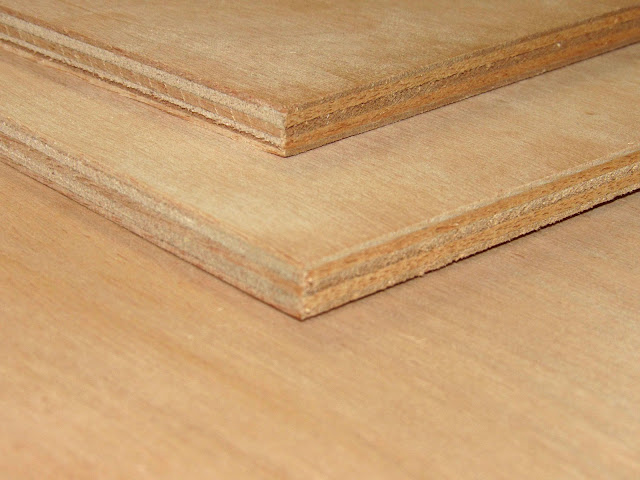A Comprehensive Guide to Plywood: Types, Uses, and Benefits
Plywood, a versatile and widely used building material, has revolutionised the construction and woodworking industries.
Its popularity stems from its affordability, strength, and adaptability to various applications. In this comprehensive guide, we delve into the different types of Plywood Melbourne, their uses across industries, and the manifold benefits they offer.
Understanding Plywood
Plywood is a composite material made from thin layers of wood veneer glued together with adjacent layers having their wood grain rotated up to 90 degrees to one another.
This cross-graining technique enhances the strength and stability of the final product, making plywood resistant to warping and cracking. The thickness of plywood sheets can vary, ranging from thin sheets used in crafting to thick panels for structural applications.
Types of Plywood
Softwood Plywood:
Softwood plywood is crafted from softwood species like pine, cedar, or spruce. It is renowned for its affordability and lightweight properties, making it a popular choice for general construction, sheathing, and DIY projects.
Softwood plywood is available in various grades, with higher grades offering a better appearance and fewer imperfections.
Hardwood Plywood:
Hardwood plywood is manufactured from hardwood species such as oak, maple, or birch. It boasts superior strength, durability, and aesthetic appeal compared to softwood plywood.
Due to its premium quality, hardwood plywood Melbourne finds extensive use in cabinetry, furniture making, flooring, and decorative applications where appearance matters.
Marine Plywood:
Designed specifically for water-based applications, marine plywood is constructed using waterproof adhesive and higher-quality veneers.
It is highly resistant to moisture, fungi, and rot, making it ideal for boat building, marine construction, and outdoor projects exposed to the elements.
Structural Plywood:
Structural plywood is engineered to meet stringent strength and stiffness requirements for structural applications in construction.
It is commonly used in roofing, flooring, wall sheathing, and formwork due to its excellent load-bearing capacity and dimensional stability.
Decorative Plywood:
Decorative plywood features a veneer surface with intricate patterns, grains, and finishes to enhance visual appeal. It is utilised in interior design, furniture manufacturing, and architectural projects to achieve specific aesthetics and styles.
Uses of Plywood
Construction:
Plywood serves as a fundamental building material in construction projects of all scales. It is employed in framing, roofing, flooring, and wall sheathing to provide structural support, insulation, and stability.
Plywood's versatility and affordability make it indispensable in both residential and commercial construction.
Furniture Making:
Plywood is a preferred choice for furniture making due to its strength, durability, and ease of machining. It is used to construct cabinets, shelves, tables, chairs, and other household furniture pieces.
Plywood's ability to withstand weight and pressure makes it suitable for creating sturdy and long-lasting furniture designs.
Cabinetry:
In the realm of cabinetry, plywood reigns supreme for its superior strength and dimensional stability. Cabinet makers often opt for hardwood plywood for its attractive appearance and resistance to warping or shrinking.
Plywood panels provide the structural framework for cabinets, drawers, and shelves, ensuring longevity and functionality in kitchen and bathroom settings.
Transportation:
Plywood plays a crucial role in the transportation industry, particularly in the construction of vehicle bodies, trailers, and shipping containers.
Its lightweight nature, combined with high strength and impact resistance, makes plywood an ideal material for optimising fuel efficiency and load-bearing capacity in transportation vehicles.
Benefits of Plywood
Strength and Durability:
Plywood's layered construction imparts exceptional strength and durability, outperforming solid wood in many applications.
ts cross-grain configuration minimises the risk of splitting, cracking, or warping, ensuring longevity and structural integrity in various environments.
Versatility:
From structural framing to decorative finishes, plywood offers unmatched versatility across a wide range of applications.
Its availability in different grades, thicknesses, and surface finishes allows for customisation to meet specific project requirements and design aesthetics.
Cost-Effectiveness:
Plywood provides excellent value for money due to its affordability, especially when compared to solid wood or alternative composite materials.
Its strength-to-weight ratio, ease of installation, and low maintenance requirements contribute to cost savings over the lifecycle of a project.
Environmental Sustainability:
Many plywood manufacturers prioritise sustainable forestry practices and use certified wood sources to minimise environmental impact.
Additionally, plywood can be recycled and repurposed, reducing waste and promoting eco-friendly construction practices.
Conclusion
Plywood stands as a cornerstone in modern construction and woodworking industries, offering a myriad of types, uses, and benefits. Whether it's for structural support, decorative finishes, or functional furniture, plywood continues to be the material of choice for builders, designers, and DIY enthusiasts alike.
Understanding the diverse range of plywood Melbourne options and their respective applications empowers professionals and homeowners to make informed decisions when embarking on construction or renovation projects.



Comments
Post a Comment